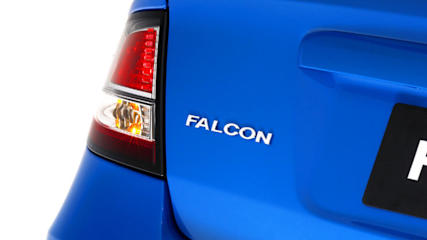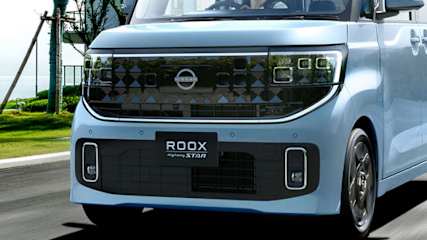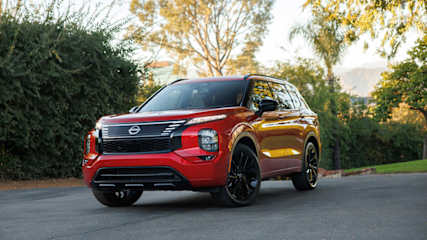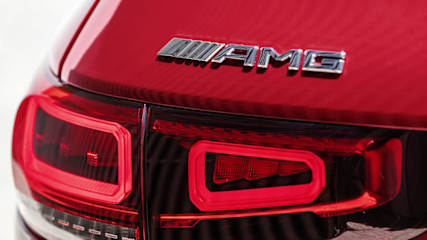Leapmotor C10 2026 review: BEV Design
By James Cleary · 23 Dec 2025
Leapmotor hit the Aussie new-car market in early 2025. One of what feels like a never-ending wave of new challenger brands arriving from China in the last 18 months.And its C10 is yet another option in the crowded mid-size SUV segment, in this case offered in petrol-electric hybrid and pure-electric form.Its sharp pricing and generous spec were marked as big pluses in our first drive reviews. As was its space-efficiency and comfy drive characteristics.But another unifying theme was its relatively unrefined ADAS crash-avoidance systems. Which, to its credit, the brand has addressed head-on with an over-the-air software update.Timely then, to get behind the wheel and see if that high-tech tweak has made a discernible difference to an already solid package.At $49,888, before on-road costs, the top-spec C10 Design grade we’re testing here undercuts the Tesla Model Y RWD Single motor ($58,900, BOC) by the best part of $10K and puts the heat on other electric SUVs in its orbit like the Cupra Tavascan ($60,990), Kia EV5 Air 2wd Long Range ($61,170) and VW ID.4 Pro RWD ($59,990). And that price includes a heap of standard features like 20-inch alloy wheels, a (fixed) panoramic glass roof (with power sunshade), dual-zone climate control air, electric front seats (heated and ventilated), 12-speaker audio, a power tailgate, synthetic leather seat trim and multi-colour (interior) ambient lighting.There’s also adaptive cruise, built-in sat nav, a 360-degree camera view, a heated steering wheel and heaps more. Impressive for a car sitting under the $50,000 threshold.Not too many straight edges on the C10 with curves and soft character lines the order of the day in terms of exterior design.While the flush-fit door handles deliver obvious aero benefits, the way they flip out and hinge from the front gets a black mark from me. They’re an ergonomic miss that force you to twist your wrist at an awkward angle to more or less push the door open. The entire handle pulling out parallel to the body is always a better solution.The cabin is minimalist to the max. Virtually no physical buttons and the 10.25-inch instrument cluster and 14.6-inch central screen are the only standouts in a sea of smooth, mid-grey surfaces. If you like Tesla’s cabin design ethos you’ll be onboard with the C10. But before you even get inside, access is weird. For a start, the ‘key’ is a sizeable plastic card which needs to be held against the driver’s side exterior mirror to lock or unlock the car, which obviously isn’t ideal if you want to open up the boot or passenger side doors.Owners have access to a smartphone app which includes a proximity unlocking function, but even that sounds overly complex just to get in the car. That said, the interior is super spacious for a car just over 4.7m long with a 2825mm wheelbase. Lots of breathing room up front and sitting behind the driver’s seat, set to my 183cm position, I have hectares of leg, head and shoulder room.There are cupholders all over the place, map pockets, big bins in the doors as well as a lidded cubby between the front seats and another storage area underneath the ‘flying buttress’ centre console.There are multiple USB-C and USB-A jacks, a wireless phone charger and 12-volt power for other devices, but, shock, horror… no Android Auto or Apple CarPlay functionality. That’ll be a deal-breaker for some.Boot space is handy at 581L with the 60/40 split-fold rear seat upright and 1410L with it lowered but another black mark goes against the lack of a physical spare tyre. A repair/inflator kit is your only option, which isn’t good enough.Outputs from the rear-mounted permanent magnet synchronous motor, powered by a 69.9 LFP battery, are 160kW/320Nm and Leapmotor quotes a WLTP range of “up to 425km”.Maximum DC charge rate is a relatively modest 84kW for a claimed 30-80 per cent charge time of “approximately 30 minutes”. AC charge rate is 11.0kW and V2L (Vehicle to Load) functionality is a welcome addition.Official WLTP energy consumption is 18.5kWh/100km and during our week with the car we saw a dash-indicated figure of 13.4kWh/100km, which is excellent for a roughly 2.0-tonne SUV.Claimed 0-100km/h acceleration is 7.5 seconds and the C10 feels sharp with the ability to effortlessly negotiate city and suburban traffic. Steering weight is adjustable through ‘Light’, ‘Standard’ and ‘Sport’ settings, although none of them add any meaningful road feel to the equation. Ride comfort, however, is terrific and all signs of the previous, overly assertive ADAS crash-avoidance systems are gone. Lane keeping, lane centering, even the over-speed warning, deliver subtle inputs and only when required.The C10 BEV is also quiet (even for an EV) with the 245/45 Dunlop e.Sport Maxx rubber remaining low-key with wind noise minimal, even at freeway speeds.The C10 is covered by a six-year/150,000km warranty, which is competitive and includes roadside assist for the duration, while the drive battery is covered for eight years/160,000km.Service is recommended every 12 months/20,000km which is more frequent than some pure-electric competitors (typically at two years/40,000km). And capped-price servicing is available for five years at $2000, or $400 per service, which is on the high side for an EV, even in this class.Crash-avoidance safety systems include auto emergency braking (AEB) front and rear, blind-spot monitoring, lane keeping assist, lane departure warning, rear cross-traffic alert, driver fatigue monitoring and tyre pressure monitoring.There are seven airbags onboard, including a front centre bag, three child seat top tether points across the rear seat (as well as ISOFIX anchors on the two outer positions) and multi-collision brake to minimise the chances of subsequent impacts after an initial crash. The C10 scored a maximum five-star ANCAP assessment from testing in 2024.








.jpg)
.jpg)

.jpg)




.jpg)